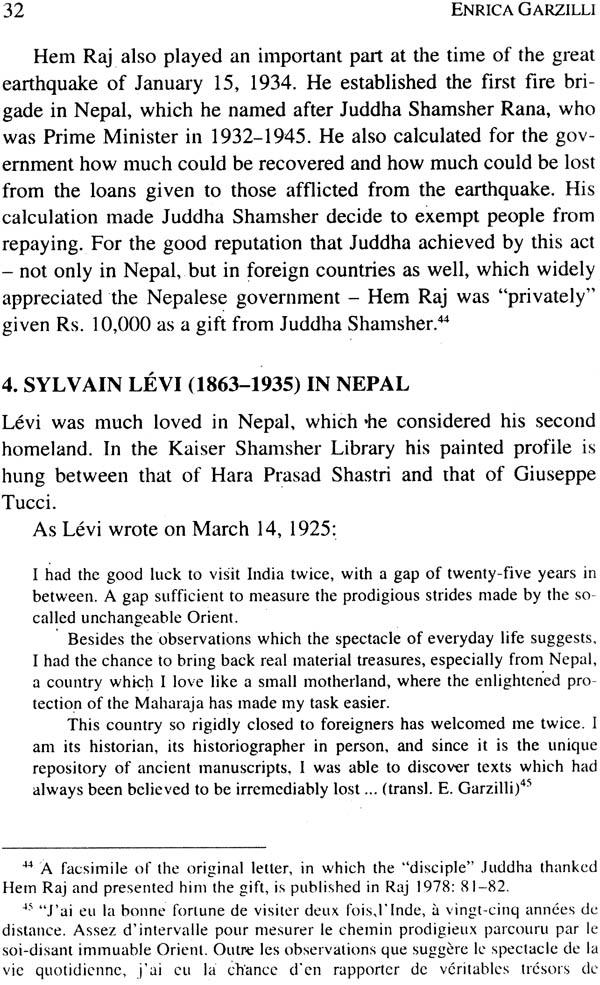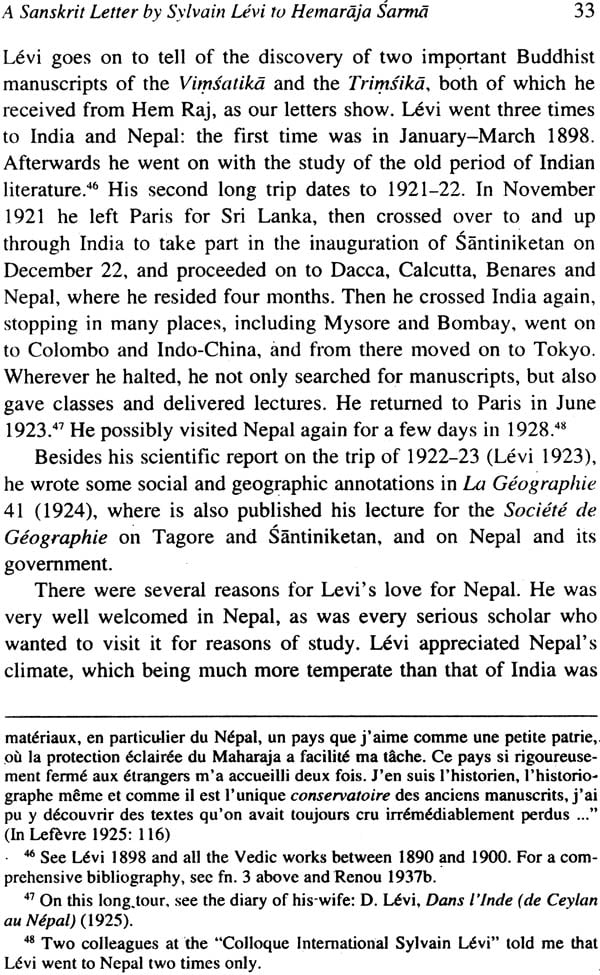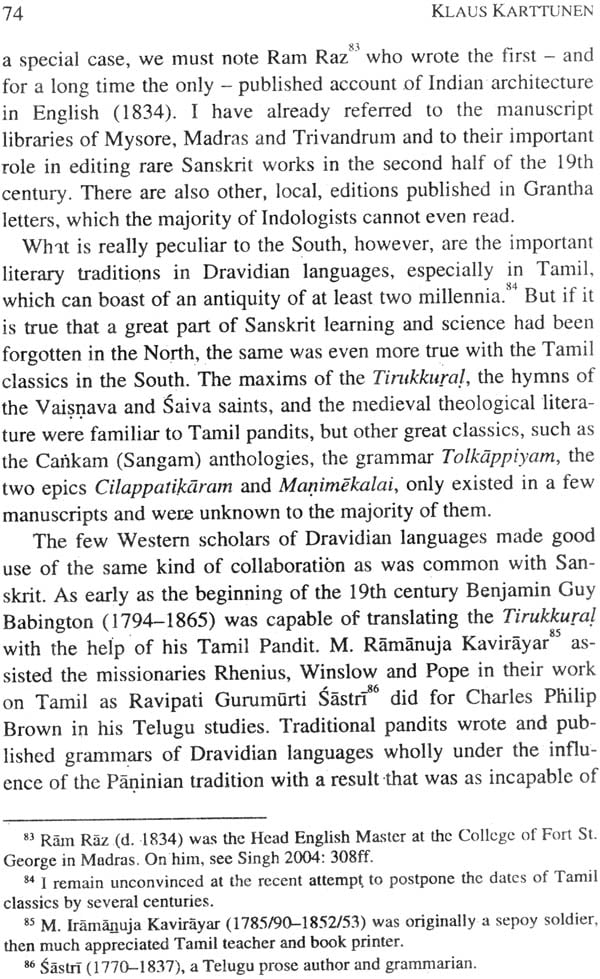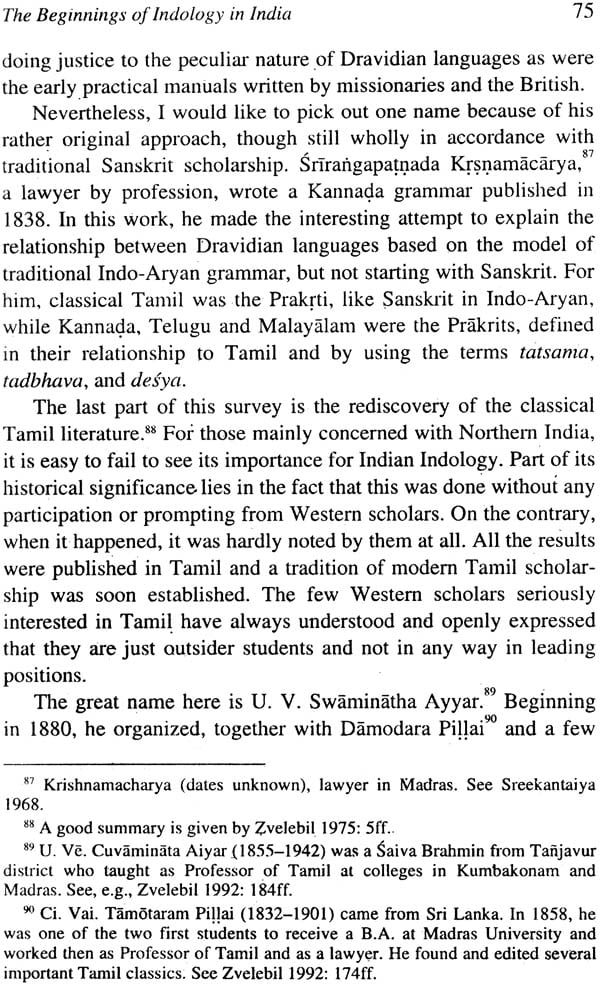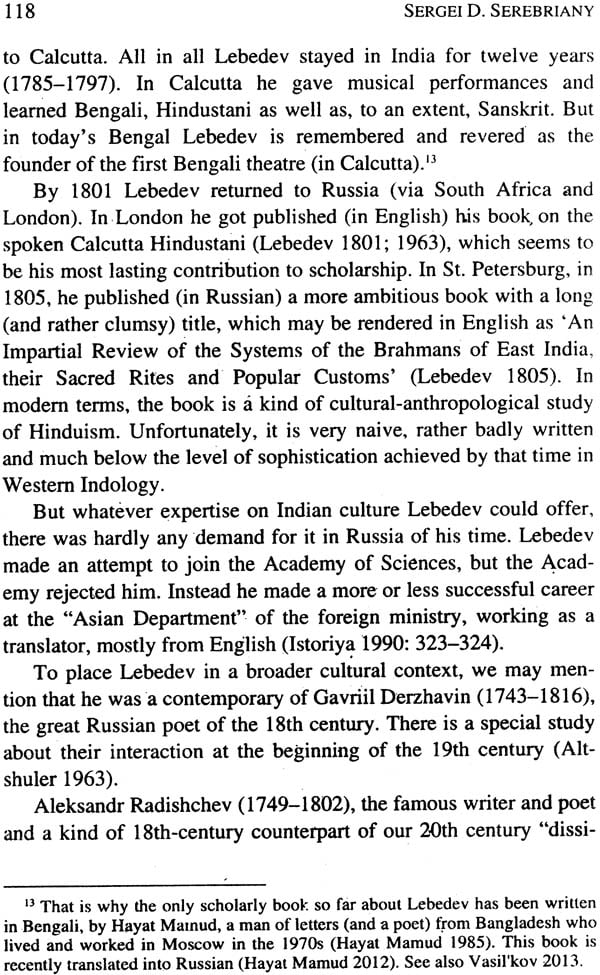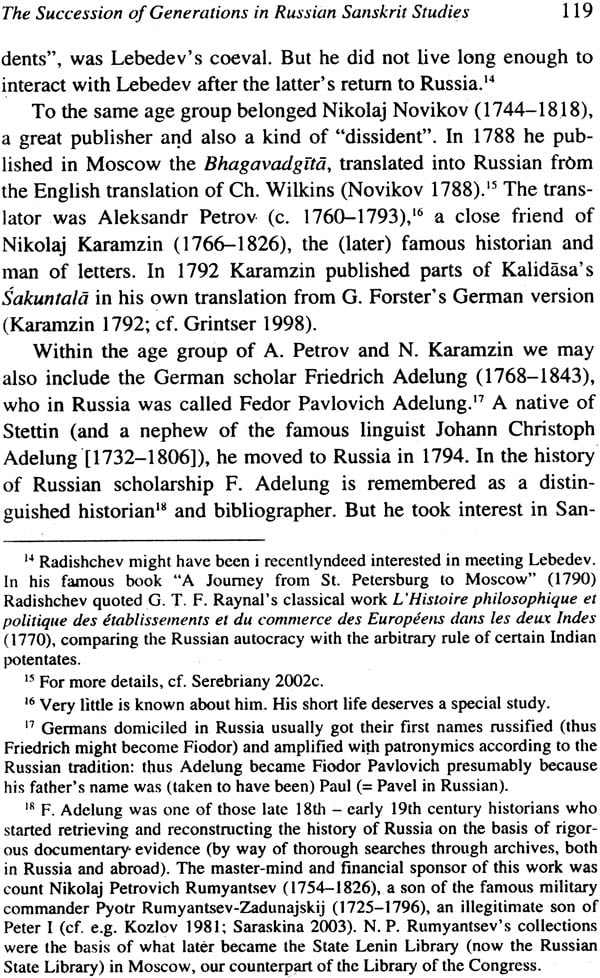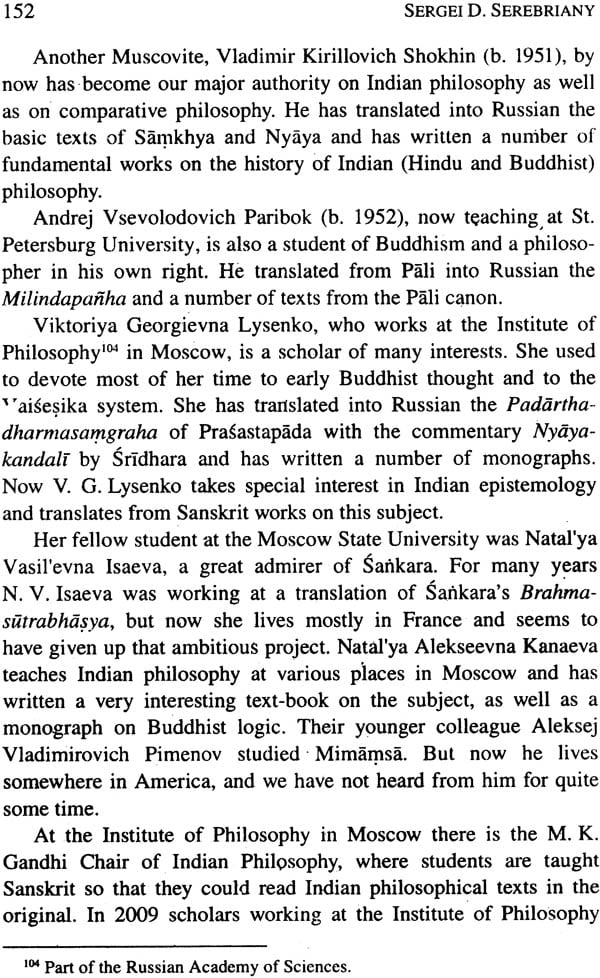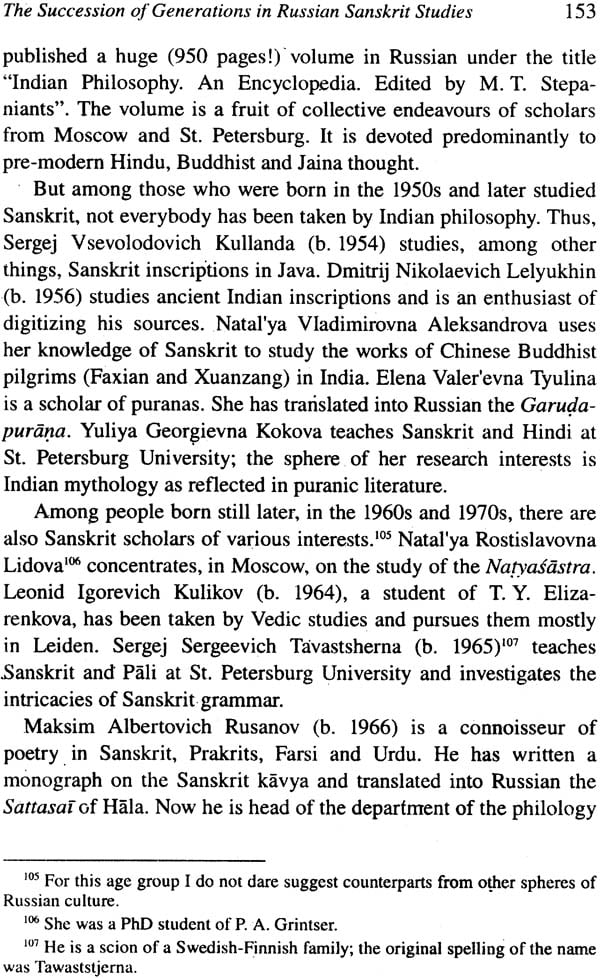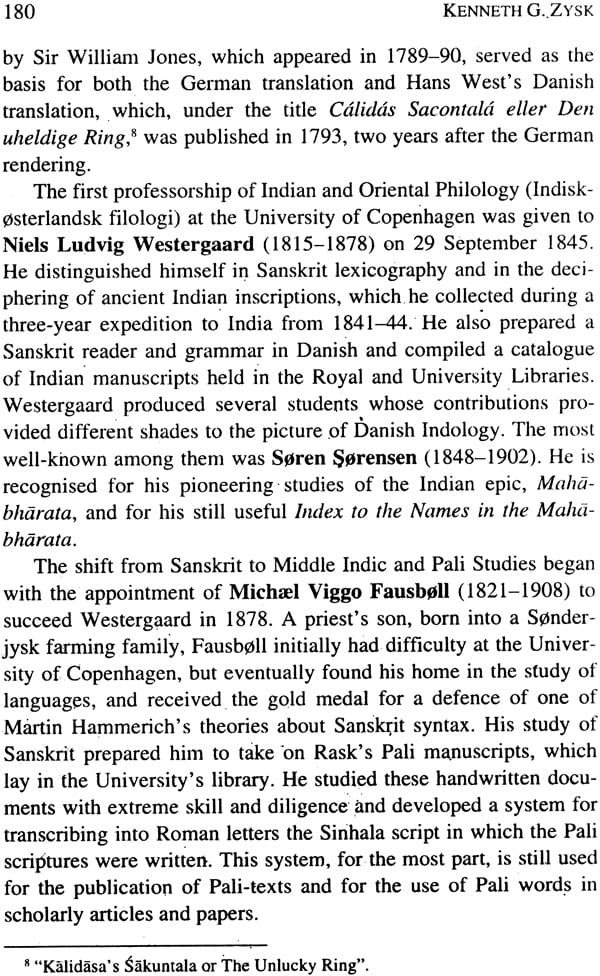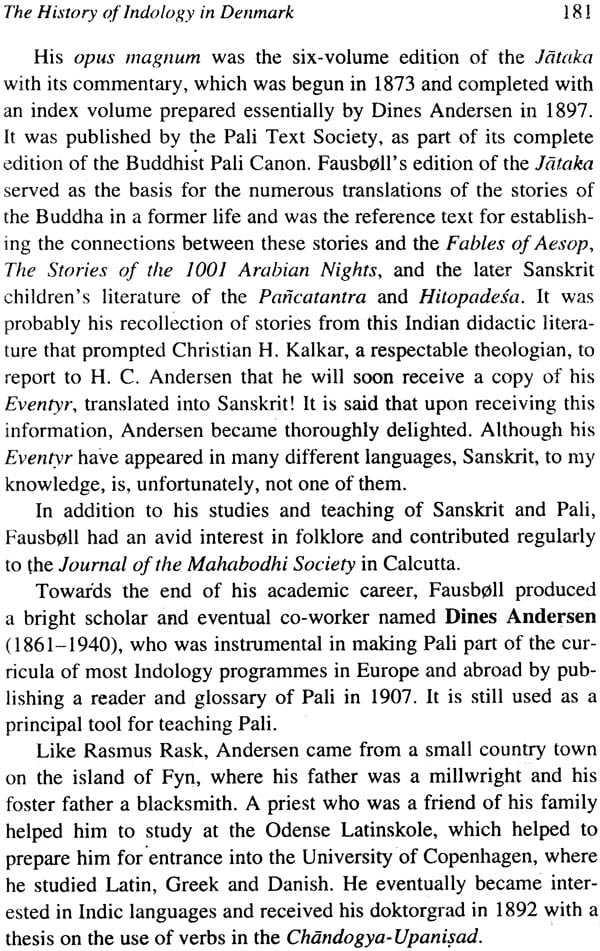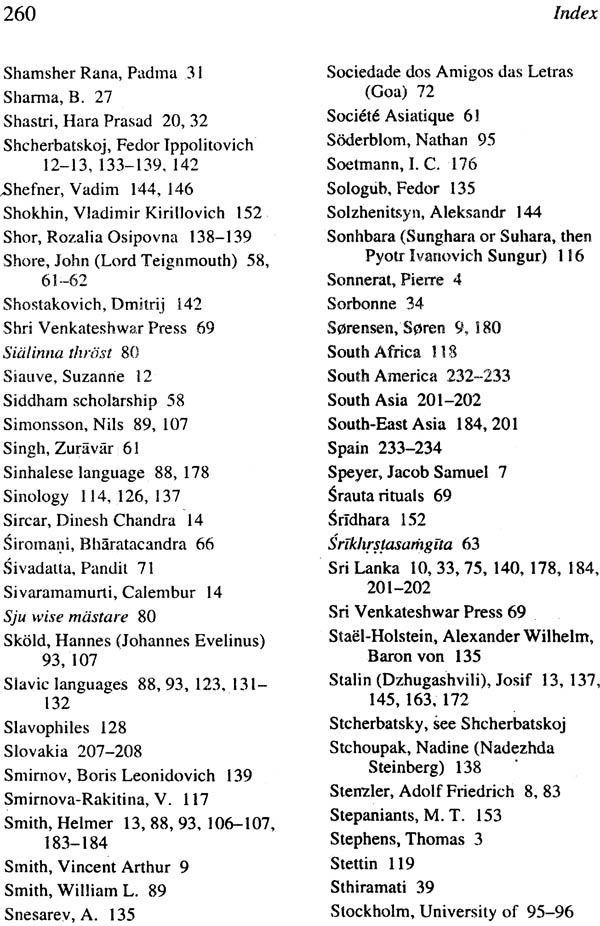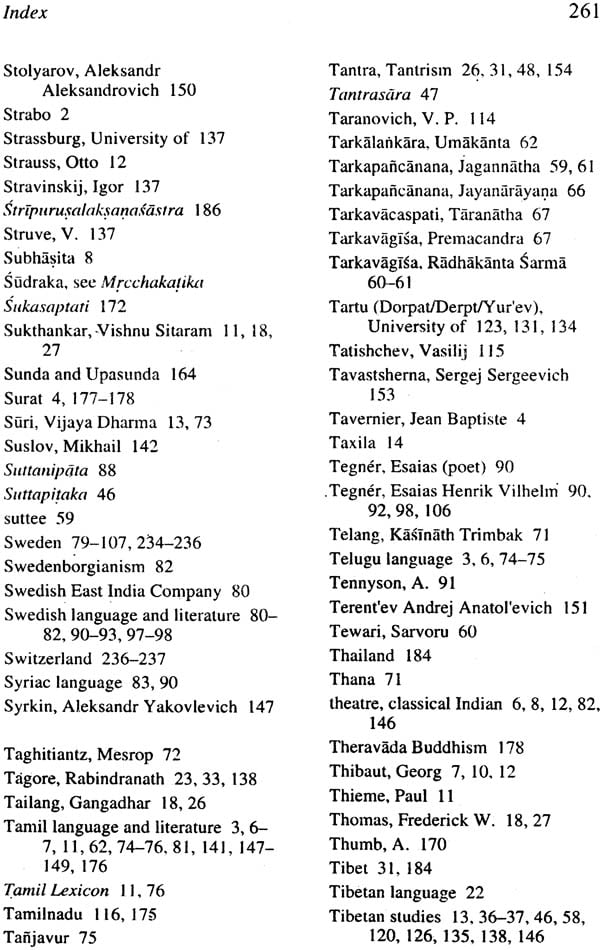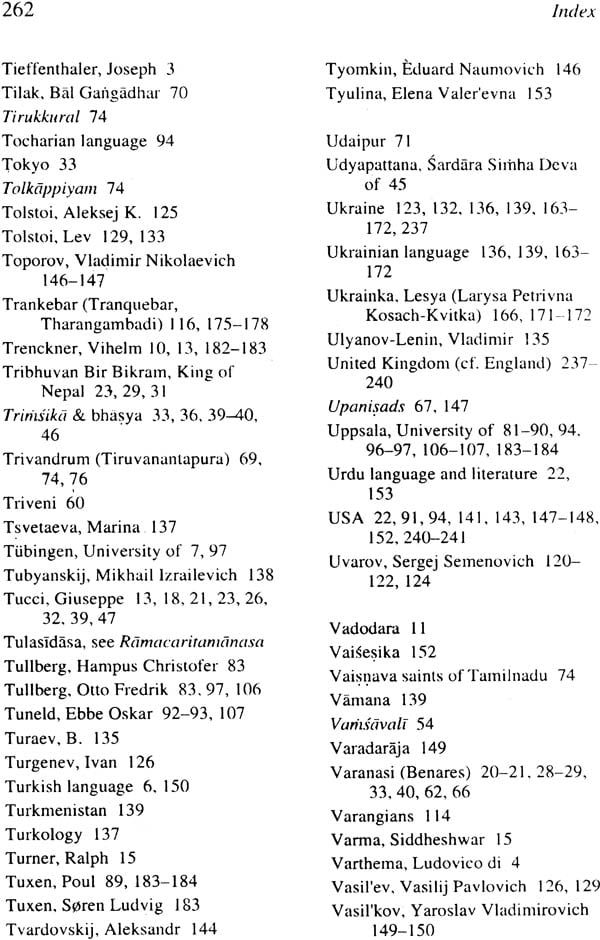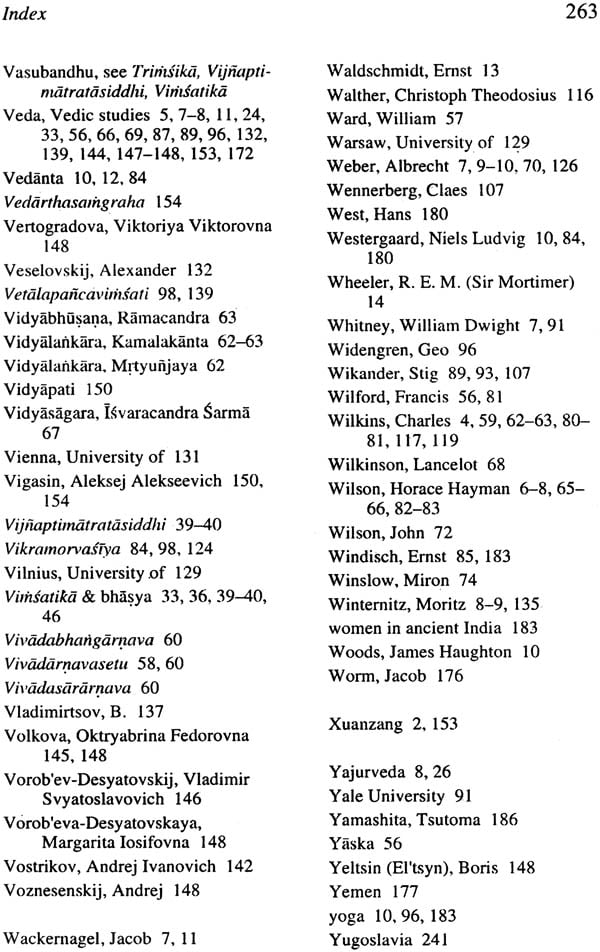
History of Indological Studies
Book Specification
| Item Code: | NAK730 |
| Author: | Klaus Karttunen |
| Publisher: | MOTILAL BANARSIDAS PUBLISHERS PVT.LTD |
| Language: | English |
| Edition: | 2015 |
| ISBN: | 9788120839946 |
| Pages: | 276 |
| Cover: | Hardcover |
| Other Details | 8.5 inch X 5.5 inch |
| Weight | 410 gm |
Book Description
The history of Western knowledge of India began about 2500 years ago, but the history of Indology only about 230 years ago. It happened in Kolkata, as a fusion of colonial and scholarly interests, but also not uninfluenced by the scholarly traditions of India. In the next 75 years Indological chairs were founded in important universities in most European countries. The present volume contains a general introduction to the history of South Asian studies, a bibliography and six case studies of different aspects, including early Indological studies in India, Indological traditions in Sweden and Denmark, Sanskrit studies in Russian cultural history, Ukrainian translations from Sanskrit and the Sanskrit correspondence between the French Indologist Sylvain Levi and the Nepalese scholar Hernaraja Sarma.
Klaus Karttunen has been the Professor South Asian and Indo-European Studies at the University of Helsinki. He has published many studies about the relations between ancient India and Graeco-Roman West, about the history of South Asian studies and about the ideas of nature in Indian literature.
Completing this book turned out to be much more difficult than I originally supposed. At the beginning, I was very happy to be able to organize a section at the Helsinki Conference dealing with' the history of Indology, one of my favourite subjects since the 1970s. To my disappointment, some cancellations made the section much smaller than I had planned. Nevertheless, we had an interesting morning with some useful papers and fruitful discussion. But when I looked at the matter after the conference, I saw that the planned book would be very thin indeed. After some further pondering and consultation with Prof. Parpola, 1 decided to fill it out with other material. I had myself an unpublished paper which seemed very well suited to the purpose as it gave a sort of background to the history of later Western Indology. I also thought that a bibliography of printed material about the history of Indology in general and lndological traditions of various countries in particular would add value to the book. When Prof. Zysk, who had not been able to attend the conference, agreed to provide his unpublished (though available as net version) paper about the history of Indian studies in Denmark, I saw that I had succeeded in collecting what seemed to me a nice volume. Here it is.
As the papers included in this volume only discuss some rather narrow parts of lndology, I have prepared as an introduction a short summary showing the main trends in the past of Indoiogy. Prof. Garzilli continues her studies of the contacts of some Western Indologists with Nepalese scholars. My own papers have two quite different topics. The first is about the role of Indian pandits and scholars in the early history of Indology, while the second traces the development of Indian studies in Sweden. Prof. Serebriany presents an interesting attempt of combining Indology in Russia with some trends in Russian cultural history. Dr. Zavhorodniy's contribution about the Ukrainian translations of Indian classics contains much little-known information. The article of Prof. Zysk was mentioned above and the book concludes with a bibliography of the history of Indology.
Finally, I must thank Professor Asko Parpola and Motilal Banarsidass for their patience in waiting for this volume. Margot Whiting has kindly checked the English of the Preface and Introduction.
Klaus Karttunen
This introduction is intended to offer an outline of ideas and trends in the history of Indian Studies. There are, in fact, two entirely different ways of considering this history. On the one hand, it can be seen from the viewpoint of the growth of knowledge (when errors and distortions should also be included) of Indian literature, history and civilization, but on the other hand, it can be seen as a sort of a continuation of ancient Indian science. As the majority of the articles in the present book deal with Western Indology, I have taken the first viewpoint in this introduction, while the second will receive some light in my first article in this book.
1. Prehistory
The beginnings of Western knowledge of India lie in Graeco-Roman Antiquity. This can be roughly divided into three periods: The early period before Alexander and his expedition to India, the Hellenistic age from Alexander to the first century Be and the- Roman imperial period. Important authors for the early period are Herodotus and Ctesias. In the next period follow the historians of Alexander, especially Nearchus and Onesicritus, and soon also the diplomat Megasthenes and his fragments. The extant authors, such as Strabo, Pliny and Arrian, belong to the Roman period, while the Periplus of the Erythraean Sea and Ptolemy's Geography are important for geographical and trade history. Towards the end of antiquity, there are still important authors such as Pseudo-Palladius and Cosmas Indicopleustes.
The conception of India in the classical period went through certain changes. In the beginning, it was the land of fabulous riches and wonders of nature on the rim of the known world. From the time of from, Alexander's expedition, it was the land of naked philosophers with their rigorous ascetism, but also a real geo- graphical and political entry and, especially in the Roman period, a source of various luxury items.
In the Middle Ages, the continuation of the classical heritage is the dominate trait in the accounts of India. The direct contact between Europe and India almost stopped with the rise of Islam.' Medieval literature was characterised by a lack of historical sense, still conspicuous in the 16th century. Thousand years old accounts were deemed in the same way, or even as more valuable and credible than the contemporary ones. India was more a literary conception than a real country.
Nevertheless, we can mention some medieval travellers: Marco Polo and others saw India on their way to China or on the way back. The Dominican missionary Jordanus spent years on the Malabar coast in the early 14th century and wrote a book about 'The Wonders of India'. Nicco16 de' Conti (1395?-1469) told his story to the papal secretary Poggio Bracciolini, who published it in his De varietate fortunae. The Russian merchant Afanasij Nikitin visited India around 1470 and wrote a perceptive account which was only published in 1819.
The early modem age, from the 16th to the early 18th century, saw the beginnings of colonialism and direct trade between India and Europe. From the present viewpoint, it was the time of missionaries and travellers. Both wrote accounts, often full of prejudices, errors and incorrect conclusions, but also containing many interesting details.
From the 16th century on, there were numerous Catholic missionaries working in India and many were also literarily active. The English Jesuit Thomas Stephens (1549-1619) was a notable Marathi scholar. Jacopo Fenicio (1558-1632) wrote an account of Hinduism. Sebastian Manrique (1590?-1669) visited many little- known places. The Jesuit Roberto De' Nobili (1577-1656) adopted Indian customs and became the Christian guru in Madurai. The German Jesuit Heinrich Roth (1610-1668) was an early Sanskrit scholar, and Constantino Beschi (1680-1747) is still remembered as a Tamil scholar and author. The Austrian Jesuit Joseph Tieffenthaler (1710-1785) prepared a geographical description of India, mainly based on his own surveying. The French Jesuits Jean Calmette (1692-1740), Jean Francois du Pons (1698-1752) and Gaston-Laurent Coeurdoux (1691-1779) may already be listed among the pioneers of classical Western Indology. Jean-Antoine Dubois (1766-1848) was long appreciated until he turned out to be just a copyist, wholly dependent on the work of N.-J. Desvaulx (1745-1823). The Italian Carmelite Paulin us a Sancto Bartholomaeo (1748-1806) in Kerala and Rome was a pioneer of Sanskrit philology.
We can .also name a few Protestant missionaries: Bartholomaus Ziegenbalg (1683-1719) did much for Tamil studies. He was followed by Benjamin Schulze (1689-1760) who wrote grammars of Hindustani and Telugu. Johann Philip Fabricius (1711-1791) collected a useful dictionary of classical Tamil. Note that Abraham Roger (1609-1649), who wrote a famous account of Hinduism, was no missionary, but the minister of a Dutch factory in South India as was also Philippus Baldaeus (1632-1671).
Early lay travellers include Ludovico di Varthema (beginning of the 16th century), Duarte Barbosa (d. 1521) and Tome Pires (d. 1524). The Venetian merchants Cesare de Federici and Gasparo Balbi visited India in the late 16th century. The Dutchman Jan Huyghen van Linschoten (1563-1611) worked in Goa, but collected information about all Asia. The first Britons visited India at the end of the century.
In the 17th century, the French physician Francois Bernier (1620-1688) wrote on contemporary Mughal history as he had himself observed it. The jeweller Jean Baptiste Tavernier (1605- 1689) visited India no less than six times. India was also included in the travels of Thomas Cory at, Pietro Della Valle, Jean Chardin and Adam Olearius.
The number of travel accounts is already so great in the 18th century that we can mention only a few important ones. Abraham Hyacinthe Anquetil-Duperron (1731-1805) visited the Parsis in Surat and became the pioneer of Avesta studies. Pierre Sonnerat (1749-1814) served in the French Navy in Asian waters.
The last important travel books hail from the beginning of the 19th century. These include the books of Francis Buchanan Hamilton (1762-1829), Bishop Reginald Heber (1783-1826), William Moorcroft (1765-1825) and Mountstuart Elphinstone (1779-1839).
2. The Early Period 1786-1852
The story of early Calcutta Indology has been told often. In the beginning, N. B. Halhed translated the legal compilation from the Persian intermediary (1776), but Charles Wilkins (1749-1833) was already capable of rendering the Bhagavadgita and the Hitopadesa directly from Sanskrit (1785 and 1787). Sir William Jones (1746- 1794) achieved much in a relatively short time. He founded the Asiatic (k) Society, translated the Sakuntala and Manu and discussed the questions of history and linguistics. Henry Thomas Colebrooke (1765-1837) began the development of Indology into a formal discipline. Among other things he was the first 10 present Vedic literature, Panini and the six schools of Indian philosophy 10 Western readers. The Baptist missionaries of Serampore, especially William Carey (1761-1834), published grammars and even some texts.
The Orientalist paradigm sees the will to subjugate the country as the main motivation of these early Indologists, but this is too simple an explanation. Undoubtedly, such a motivation was involved, when the government subsidized Indological studies, but a reading of the texts of those early scholars often reveals genuine enthusiasm. They really admired the classics of Sanskrit literature and sought to obtain important information about ancient history in general. Of course, some had also more practical (legal and missionary) interests.
Nevertheless, Sir William Jones and his contemporaries were not only pioneers of the new approach. They also had their back- ground in the earlier period and were still much dependent on such' ideas as the outlines of ancient history derived from Old Testament stories and, legends. Sir William Jones was not the founder of comparative linguistics. He foreshadowed it, but his own ideas on the development of languages and relations between them were still rather primitive.
All this soon also echoed in Europe. A number of Calcutta publications were soon reprinted and translated into French and German. This was the age between enlightenment and romanticism, of philosophers and poets. Johann Gottfried von Herder (1744-1803), Friedrich Wilhelm Joseph- Schelling (1775-1854) and Arthur Schopenhauer (1788-1869) were all positively interested in India, but criticism was offered by Friedrich Hegel (1770- 1"831) - but from the viewpoint of Indology they were all poorly informed dilettantes. Friedrich Schlegel (1772-1829) wanted to be the founder of a new discipline but his work still contains much fantasy. Johann Wolfgang von Goethe (1749-1832) admired Sakuntala, and other poets were interested in India, e.g., Heinrich Heine (1797-1856), Charles-Marie Leconte de Lisle (1818-1894) and especially Friedrich Ruckert (1788-1866).
| Preface | v | |
| Contributors | ix | |
| Abbreviations | xi | |
| Klaus Karttunen | Introduction | 1 |
| Enrica Garzilli | A Sanskrit Letter Written by Sylvain Levi in 1924 to Hemaraja Sarma (Cultural Nationalism and Internationalism in the First Half of the 20th Century: Famous Indologists Write to the Raj Guru of nepal- no.2) | 17 |
| Klaus Karttunen | The Beginnings of Indology and Modern Historiography in India | 53 |
| Klaus Karttunen | How Sanskrit Came to Sweden: The History of Swedish Indology until c. 1950. | 79 |
| Serge D. Serebrainy | The Succession of Generations in Russian Sanskrit Studies (in the 19th-20th Centuries) | 111 |
| Yuriy Zavhorodniy | The Corpus of the Ukranian Translations of Sanskrit Texts. | 163 |
| Kenneth G. Zysk | The History of Indology in Denmark | 175 |
| Klaus Karttunen | Bibliography of the History of Indology | 187 |
| Index | 243 |
